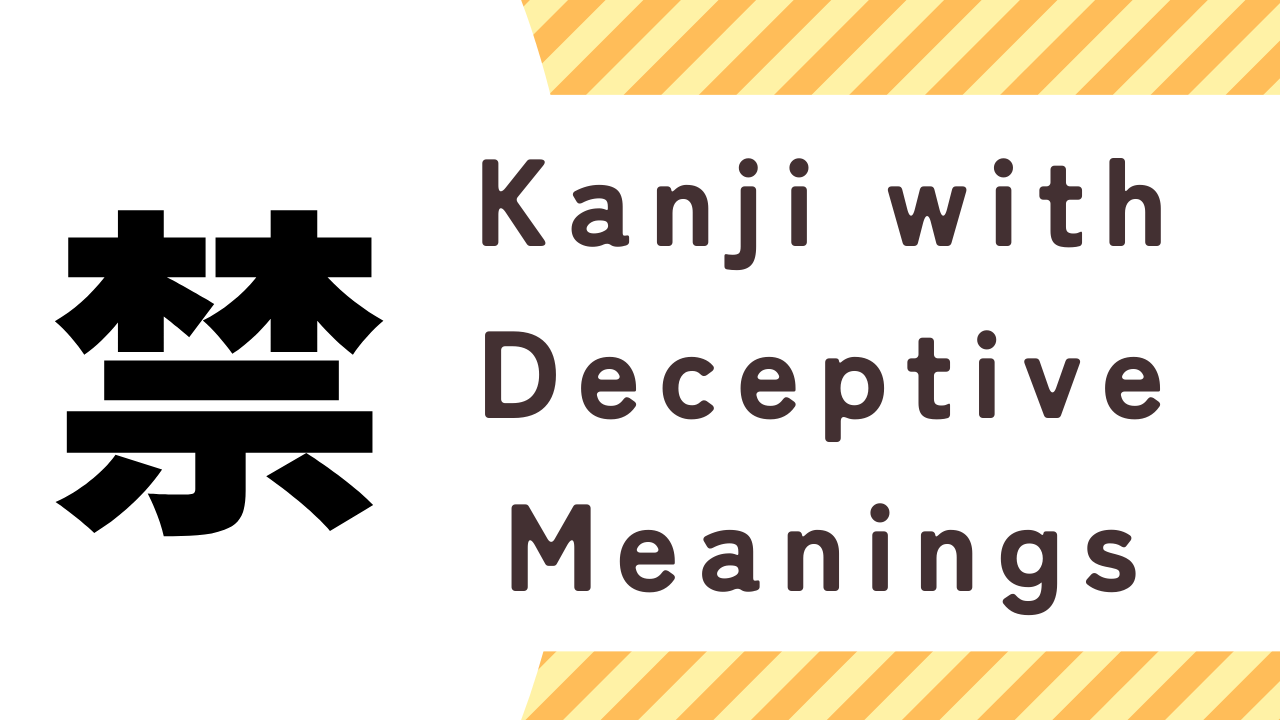Kanji, the logographic characters used in the Japanese writing system, often captivate foreigners with their intricate designs and symbolic meanings. However, not all kanji convey positive or straightforward meanings.
In this article, we’ll explore 20 kanji that are popular among foreigners but might surprise you with their less-than-desirable connotations.
Kanji with Deceptive Meanings
- 禁 (Kin) – Forbidden:
While the character 禁 (kin) might look mysterious and intriguing, it actually means “forbidden” or “prohibited.” It is commonly found in places where certain actions or behaviors are restricted.
- 死 (Shi) – Death:
The kanji 死 (shi) straightforwardly translates to “death.” Despite its simplicity, this character is often chosen for its bold appearance in tattoos or art, sometimes without a full understanding of its meaning.
- 亡 (Bou/Mou) – Deceased:
Similar to 死, the kanji 亡 (bou/mou) means “deceased” or “dead.” It is frequently chosen for its aesthetically pleasing design but carries a somber significance.
- 殺 (Satsu) – Kill:
With its sharp strokes, 殺 (satsu) means “kill” or “murder.” This kanji is sometimes chosen for its intense visual impact, not always considering the dark implication it carries.
- 嘘 (Uso) – Lie:
嘘 (uso) means “lie” or “falsehood.” Despite its curvy and playful appearance, it reveals a less-than-truthful undertone.
- 鬼 (Oni) – Demon:
The kanji 鬼 (oni), representing a demon or ogre in Japanese folklore, is often chosen for its association with traditional tales. However, its actual meaning might not align with everyone’s preferences.
- 戦 (Sen) – War:
戦 (sen) translates to “war” or “battle.” Some may find its dynamic strokes attractive, but its meaning carries a heavy and serious tone.
- 病 (Byou) – Illness:
The kanji 病 (byou) represents “illness” or “disease.” Its elegant design might be misleading, as it hints at health-related challenges.
- 喪 (Mou) – Mourning:
喪 (mou) means “mourning” or “funeral.” While its symmetry might appeal to those seeking balance in design, its meaning is associated with loss and grief.
- 壊 (Kai) – Destroy:
With its bold composition, 壊 (kai) signifies “destroy” or “break.” Its visual impact doesn’t negate the potentially negative connotation.
- 悪 (Aku) – Evil:
悪 (aku) straightforwardly translates to “evil” or “bad.” Despite its sharp strokes, it is not a kanji one might want to associate with on a personal level.
- 呪 (Noroi) – Curse:
呪 (noroi) means “curse” or “hex.” Its mysterious appearance aligns with its supernatural meaning, making it a popular choice for those fascinated by the mystical.
- 悲 (Hi) – Sorrow:
The kanji 悲 (hi) represents “sorrow” or “grief.” Its flowing strokes might evoke emotions, but its meaning is poignant and reflective.
- 罪 (Tsumi) – Sin:
With a complex composition, 罪 (tsumi) denotes “sin” or “guilt.” Its intricate design doesn’t diminish the weight of its meaning.
- 虐 (Gyaku) – Tyranny:
The kanji 虐 (gyaku) means “tyranny” or “oppression.” Its intricate details might catch the eye, but its significance is heavy-hearted.
- 絶 (Zetsu) – Sever:
絶 (zetsu) translates to “sever” or “cut off.” Its bold strokes signify a decisive action, but its meaning suggests detachment.
- 憎 (Zou) – Hate:
憎 (zou) means “hate” or “loathe.” Its calligraphic appeal contrasts with the negativity it conveys.
- 闘 (Tou) – Fight:
闘 (tou) signifies “fight” or “struggle.” Its bold presence mirrors the intensity of its meaning.
- 崩 (Hou) – Collapse:
崩 (hou) translates to “collapse” or “crumble.” Its visual depiction might seem dynamic, but its essence is about disintegration.
- 狂 (Kyou) – Madness:
The kanji 狂 (kyou) means “madness” or “insanity.” Its wild appearance reflects its meaning, cautioning against a lighthearted interpretation.
Conclusion
While these kanji characters may be aesthetically pleasing, it’s crucial to be mindful of their meanings.
Choosing kanji for tattoos, artwork, or personal expressions should involve a thorough understanding of the cultural and linguistic implications to avoid unintentional misrepresentations.



コメント